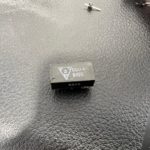I recently got a Televideo 1605 PC, which was one of the original early ‘PC compatible’ clones. It was also the first PC I had, so I have lots of good memories learning X86 assembly on it. It was a very ‘compatible’ clone of the day as it could run Microsoft flight simulator, a benchmark of sorts. I got it off eBay, and the seller says the machine was booting when it was packed. It arrived in good condition with no obvious damage, but does not boot.
The Televideo has an attached monitor, plus a sidebar floppy/hard drive combo. The machine appears to not POST at all. No beeps, no activity. My first thought was that perhaps the monitor was just dead, but even with no monitor you would still get the POST beep and floppy seek. I removed the floppy and hard drive module, and check the primary power supply. Good power on +5,+12, and -12. I checked the speaker, which is good.
I removed the motherboard and did a visual. A few blue wire mods that are probably factory, plus 4 ICs that look to have been removed and replaced based on the flux residue. I clean up the residue and verified the IC connections.. all look good. Still no POST. I removed the processor (8088) and tested with my dedicated processor tester, and it works fine. Replace, no POST. I replace each of the major subsystem ICs that are socketed with known goods, and still no POST. I also removed RAM down to the system minimum, but even no RAM would not prevent POST (since POST is from the EPROM BIOS).
I did a bit of debugging with the scope and the CLK signal is a good 4.77Mhz 33% duty cycle clock, and the processor does seem to be sequencing. It looks like code runs for a bit then executes a HALT instruction, which is typical in the original IBM PC BIOS when doing system tests that fail. I pulled the BIOS EPROM out and downloaded it so I could reverse engineer the BIOS.
Next up is to hook up a logic analyzer so I can watch the processor execute instructions and see where things are going off the rails. This BIOS mostly likely doesn’t output POST codes to 0x80 like the later IBM AT, so I will probably have to dig into the BIOS initialization to figure out what is wrong. I have a copy of the Televideo Technical Manual, which has a schematic, so it will be easy to track things down.
Any other obvious paths I am missing? Anyone have, or know someone who has a 1605?
































